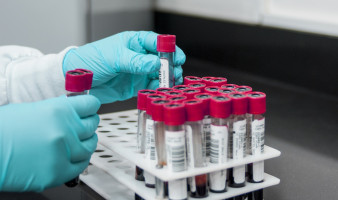
For patients diagnosed with early-stage gastric cancer (GC) (confined to the inner layers of the stomach), the prognosis is often excellent, with 5-year survival rates exceeding 90%.
When the cancer has a low risk of lymph node metastasis (LNM), the best treatment option is endoscopic resection.
This is a minimally invasive procedure that preserves the function of the stomach.
On the other hand, if the cancer has spread to the lymph nodes or presents a high risk of LNM, the standard treatment becomes radical gastrectomy with lymphadenectomy—a major surgery that removes part or all of the stomach and surrounding lymph nodes.
A core clinical challenge lies in accurately diagnosing or predicting LNM before selecting a treatment.
Current diagnostic methods, such as computed tomography (CT) scans, have high false-negative rates, ranging from 40% to 50%, making risk assessment difficult.
Because of this, doctors often recommend invasive surgery as a precaution, even though the actual incidence of LNM in early-stage GC is less than 20%.
The high proportion of patients who undergo ‘overtreatment’ calls for new techniques to detect LNM.
To tackle this pressing issue, a research team led by Assistant Professor Keisuke Okuno from Institute of Science Tokyo (Science Tokyo), Japan, has developed a novel molecular diagnostic model.
Their paper, published in the United European Gastroenterology Journal, details how they established an epigenetic liquid biopsy assay for the preoperative diagnosis of LNM in T1 GC.
First, the team performed a comprehensive genome-wide analysis to identify six novel deoxyribonucleic acid (DNA) methylation biomarkers in surgical tissue and preoperative blood samples.
These biomarkers indicate chemical modifications to DNA that dynamically regulate gene activity.
The researchers then combined the biomarkers with preoperative CT-based findings to train a combined predictive model.
In a patient cohort tested retrospectively, the proposed model exhibited high specificity and strong predictive capabilities.
This means that it could reliably identify patients who were truly at low risk for LNM.
The results showed that, by using this blood-based diagnostic tool prior to treatment, prescriptions for unnecessary surgery could be significantly reduced.
“In contrast to the current clinical standard, our model allowed about 44% of patients to avoid unnecessary surgery without missing any LNM-positive patients. Taken together, these findings highlight the clinical significance of our liquid biopsy-based combined model, which has the potential for clinical translation as a noninvasive diagnostic assay for LNM in patients with T1 GC,” remarks Okuno.
While large-scale, multi-centre trials will be necessary to validate the model more widely and accelerate its clinical adoption, this convenient tool represents an important step toward better outcomes for patients with T1 GC.
“We expect our model to advance personalised medicine for early-stage GC by improving the accuracy of treatment selection,” shares Okuno.
With any luck, more studies on this topic will minimise the number of unnecessary invasive surgeries and improve patients’ quality of life.
Source: Institute of Science Tokyo
The World Cancer Declaration recognises that to make major reductions in premature deaths, innovative education and training opportunities for healthcare workers in all disciplines of cancer control need to improve significantly.
ecancer plays a critical part in improving access to education for medical professionals.
Every day we help doctors, nurses, patients and their advocates to further their knowledge and improve the quality of care. Please make a donation to support our ongoing work.
Thank you for your support.